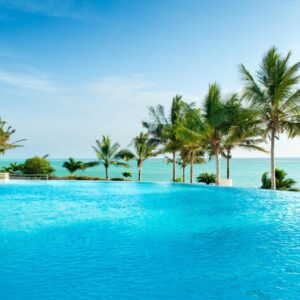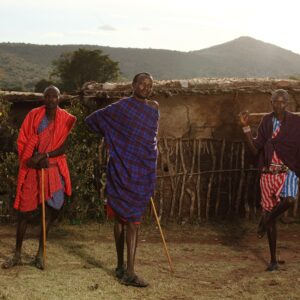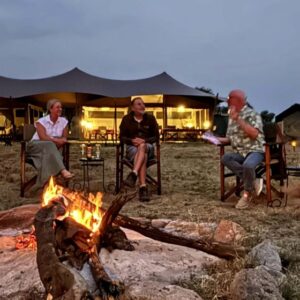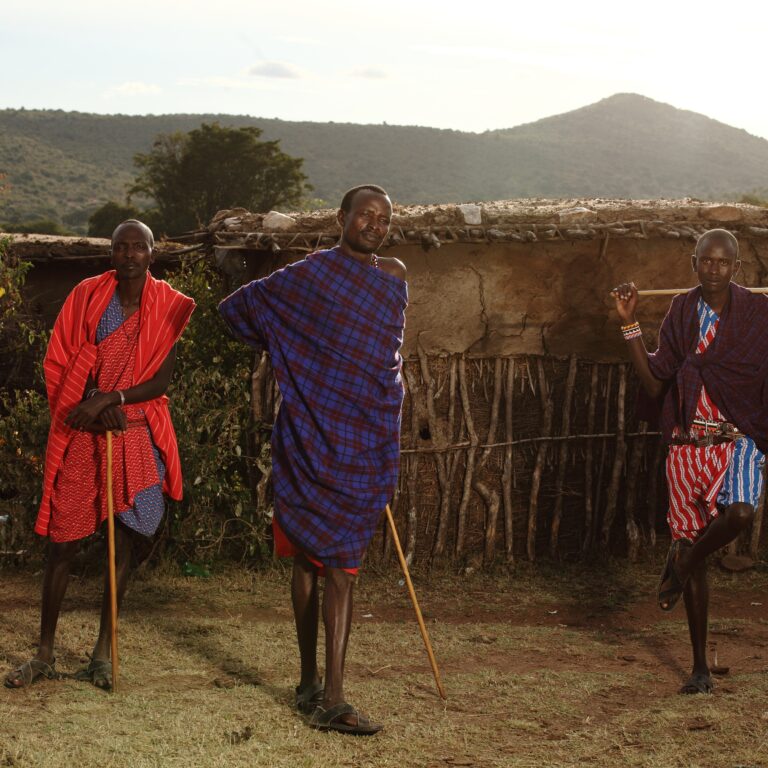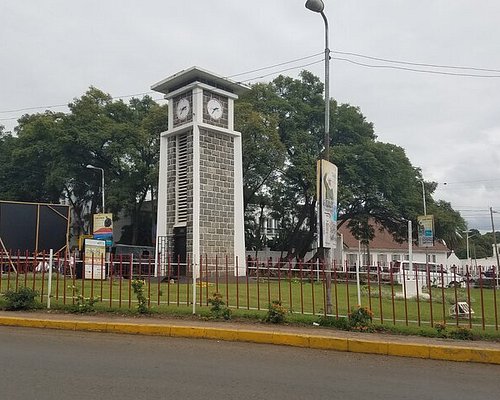Lake Eyasi in Tanzania is a great destination for travelers seeking unique cultural experiences and stunning natural scenery, particularly for birdwatching and cultural tourism. It’s a haven for birdwatchers with diverse species, and home to the Hadzabe and Datoga tribes, offering a chance to learn about their traditional hunter-gatherer and pastoralist lifestyles. In essence, Lake Eyasi offers a blend of cultural immersion, natural beauty, and unique activities, making it a worthwhile destination for those seeking an authentic Tanzanian experience.
Tucked away in a remote corner of northern Tanzania, nestled within the folds of the Great Rift Valley, lies Lake Eyasi – a shimmering, shallow soda lake often overlooked by those rushing between the famous safari circuits, Lake Eyasi Cultural Experience. Yet, to bypass Lake Eyasi is to miss a truly profound and enriching experience, one that offers a deep dive into ancient cultures, unique natural beauty, and an authentic taste of Tanzania far from the well-trodden paths. If you seek more than just wildlife sightings and crave a journey that touches your soul, here are compelling reasons why Lake Eyasi deserves a prominent spot on your itinerary.
1. Cultural Encounters with the Hadzabe: One of Africa’s Last Hunter-Gatherers
The primary draw of Lake Eyasi for many is the unparalleled opportunity to interact with the Hadzabe, one of the last true hunter-gatherer tribes in Africa. For thousands of years, the Hadzabe have maintained a traditional way of life, living in harmony with nature and relying entirely on hunting game with bows and arrows, and foraging for wild fruits, tubers, and honey.
A visit to their camps is a humbling and eye-opening experience. You can accompany Hadzabe men on their early morning hunts, witnessing their incredible tracking skills and precision with their handmade bows. You might learn about medicinal plants from the women as they gather sustenance from the bush. Their click language is fascinating, and their egalitarian society, where decisions are made collectively and resources shared, offers a stark contrast to modern life. This isn’t a staged performance; it’s an authentic glimpse into a way of life that is rapidly disappearing, providing a profound appreciation for human resilience and connection to the land.
2. Cultural Immersion with the Datoga: Skilled Pastoralists and Blacksmiths
While the Hadzabe are often the star attraction, Lake Eyasi is also home to the Datoga, a semi-nomadic pastoralist tribe known for their distinctive culture, elaborate adornments, and exceptional metalworking skills. Unlike the Hadzabe, the Datoga primarily rely on livestock, particularly cattle, as a measure of wealth and status.
Visiting a Datoga village offers another layer of cultural immersion. You can witness their skilled blacksmiths at work, forging arrowheads, knives, and intricate jewelry from scrap metal – items they often trade with the Hadzabe. Their traditional dances, communal rituals, and vibrant attire are a feast for the senses. Engaging with the Datoga provides insight into a different, yet equally rich, indigenous way of life, showcasing the diverse cultural tapestry of Tanzania.
3. Birdwatching Paradise: A Haven for Avian Life
Despite its often-dry appearance, Lake Eyasi transforms into a bustling birdwatching paradise, especially during the wet season (November to May). As a seasonal soda lake, its fluctuating water levels attract an incredible array of avian species, making it a dream destination for bird enthusiasts.
Expect to see vast flocks of flamingos painting the horizons pink, alongside great white pelicans, grey-headed gulls, yellow-billed storks, pied avocets, and African spoonbills. The surrounding acacia woodlands and marshy areas also host numerous other resident and migratory birds, including various weaver species and Fischer’s lovebirds. The diverse ecosystem around the lake ensures there’s always something new for your binoculars to discover, offering a peaceful counterpoint to the more active cultural encounters.
4. Hiking and Nature Walks: Exploring Diverse Landscapes on Foot
Lake Eyasi’s varied topography, from flat lakebeds to rolling hills and ancient baobab forests, makes it an excellent destination for hiking and nature walks. Unlike the restricted vehicle-only safaris of national parks, here you can truly connect with the environment on foot.
Guided walks allow you to explore the diverse landscapes, learning about the local flora and fauna from experienced local guides. You can trek along the lake’s shores, traverse parts of the savannah, and wander through groves of majestic baobab trees, some of which are hundreds of years old. These walks offer fantastic opportunities for photography and a chance to truly immerse yourself in the serene beauty of the region.
5. Stunning Landscapes: A Photographer’s Dream
The scenery around Lake Eyasi is dramatically different from the lush northern safari parks. It presents a unique, almost otherworldly beauty characterized by its vast, often dry lakebed, punctuated by ancient baobab trees, and framed by the Great Rift Valley escarpment.
The intense dry season often leaves the lake as a shimmering salt pan, creating surreal reflective surfaces and expansive, dusty plains. The sunrises and sunsets here are particularly spectacular, casting warm hues across the landscape and silhouetting the iconic baobabs. For photographers, the contrasting textures, vibrant sunsets, and the raw, untouched feel of the environment offer endless creative possibilities.
6. Off-the-Beaten-Path Adventure: Escape the Crowds
One of Lake Eyasi’s most appealing attributes is its remote and undeveloped nature. It remains firmly off the main tourist circuit, meaning you’ll experience a more intimate and authentic adventure, far removed from the throngs of safari vehicles.
This “off-the-beaten-path” charm translates into more personal interactions with local communities, quieter trails, and a genuine sense of discovery. If you seek to venture beyond the typical tourist hotspots and experience a side of Tanzania that few get to see, Lake Eyasi delivers an unparalleled sense of untouched wilderness and cultural authenticity.
7. Unique Photographic Opportunities: Capturing Unforgettable Moments
Given its stunning landscapes and profound cultural encounters, Lake Eyasi is a photographer’s paradise. The dramatic lighting of sunrise and sunset over the vast lakebed, the intricate details of Datoga jewelry, the raw authenticity of Hadzabe hunting techniques, and the majestic baobab trees all present unique and compelling subjects.
Beyond the obvious, the genuine interactions with the tribes, the candid moments of daily life, and the vibrant local markets offer a wealth of opportunities to capture truly unique and impactful images that tell a story far beyond a simple safari snapshot.
8. Ghorofani Market: A Glimpse into Local Life
For a true immersion into local commerce and community life, a visit to Ghorofani Market is a must. Held on specific days (typically on the 5th day of the month, though schedules can vary), this bustling market is the central hub for traders and shoppers from around the Lake Eyasi region, including the Hadzabe and Datoga.
Here, you can witness the vibrant exchange of goods, from livestock and agricultural products to handmade crafts and everyday necessities. It’s a sensory experience, filled with the sights, sounds, and smells of authentic Tanzanian rural life, offering a unique window into the economic and social fabric of the area.
9. Sundowners by the Lake: A Perfect End to the Day
After a day of cultural exploration and nature walks, there’s nothing quite like unwinding with a sundowner by the tranquil shores of Lake Eyasi. As the sun dips below the horizon, painting the sky in fiery oranges and purples, the serene atmosphere provides a moment of reflection and pure relaxation.
Many lodges and camps in the area offer this classic safari experience, setting up chairs, a small bar, and perhaps even a campfire by the lake. Sipping a cool drink while watching the last rays of light fade over the water is a magical way to conclude your day and soak in the peaceful ambiance of this special place.
10. Exploring the Mumba Cave: A Journey into Prehistory
For those with an interest in archaeology and human history, a visit to Mumba Cave is a fascinating addition to the Lake Eyasi experience. This significant archaeological site, located near the lake, has yielded deposits spanning the transition between the Middle Stone Age and Late Stone Age in Eastern Africa.
Evidence found here, including ancient tools, human and animal bones, and even rock art, offers insights into early human behavior and the origins of modern humans. Exploring Mumba Cave is a humbling journey back in time, connecting you to the ancient ancestors who once roamed these very landscapes.
11. Wildlife Encounters: Beyond the “Big Five”
While Lake Eyasi isn’t a “Big Five” safari destination like the Serengeti or Ngorongoro, it does offer unique wildlife encounters. Beyond the prolific birdlife, the surrounding bush and woodlands are home to a variety of animals.
With local guides, you might spot smaller antelopes, zebras, giraffes, baboons, and various reptiles. During the wet season, the lake can attract hippos. The emphasis here is on appreciating the ecosystem as a whole, observing the intricate relationships between the land, its people, and its wild inhabitants, rather than ticking off large predators.
When is the best time to visit Lake Eyasi? The best time to visit Lake Eyasi for optimal conditions and cultural experiences is during the dry season, from June to October. During this time, the weather is generally dry and pleasant, making it easier to travel and explore the area, including interactions with the local tribes.
What are the best things to do in Lake Eyasi? Lake Eyasi offers unique cultural and natural experiences. You can immerse yourself in the lives of the Hadzabe and Datoga tribes, enjoy bird watching, and explore the beautiful landscapes with guided nature walks and hikes. Additionally, the lake is a great spot for birding, with various species like flamingos and pelicans, and offers opportunities for canoeing and fishing during the wet season.
What are interesting Facts about Lake Eyasi? Lake Eyasi, a soda lake in the Great Rift Valley of Tanzania, is known for its unique ecosystem and cultural significance. It’s a haven for diverse birdlife, including flamingos, and is home to the Hadzabe and Datoga tribes, who offer fascinating cultural insights. The lake’s water levels fluctuate dramatically, and it’s a crucial source of water for wildlife during the dry season.
What activities are in Lake Eyasi? Lake Eyasi offers a variety of activities centered around cultural immersion and natural exploration. Visitors can engage with the Hadzabe and Datoga tribes, learn about their unique lifestyles, and even participate in hunting or blacksmithing demonstrations. Bird watching is also a popular activity, with the lake attracting diverse species, especially during the wet season. Additionally, guided nature walks, trekking, and canoeing are available for those interested in the surrounding landscape and wildlife.
How deep is Lake Eyasi? Lake Eyasi is a shallow, alkaline lake in northern Tanzania. It is typically less than 1 meter (3.3 feet) deep, even during wet periods. While it can reach depths of 10 meters (33 feet) in some areas, especially where fresh water is found, the majority of the lake is quite shallow, with white alkaline shallows.
What is the history of Lake Eyasi? Lake Eyasi’s history is deeply intertwined with the geological formation of the Great Rift Valley and the long-standing presence of the Hadzabe and Datoga tribes. The lake itself is believed to be 65 million years old, formed by a fissure on the valley floor. For at least 50,000 years, the Hadzabe hunter-gatherers have lived on its shores, while the Datoga pastoralists inhabit the Yaeda Valley to the southeast. The area was later incorporated into British colonial-era game reserves and eventually designated as a protected ecosystem.
Is Lake Eyasi worth visiting? Yes, Lake Eyasi is definitely worth visiting. It offers a unique and enriching experience that combines cultural immersion with natural beauty, making it a standout destination in Tanzania. You can interact with indigenous tribes like the Hadzabe and Datoga, explore the stunning landscapes, and enjoy birdwatching opportunities, all in a more intimate and authentic setting than some of the more popular safari destinations.
In summary
Lake Eyasi is a destination that truly transcends the conventional safari experience. It’s a place where ancient traditions thrive, where nature’s raw beauty is on full display, and where you can forge unforgettable connections with both the land and its people. For the discerning traveler seeking depth, authenticity, and a truly unique adventure, Lake Eyasi is an absolute must-visit

